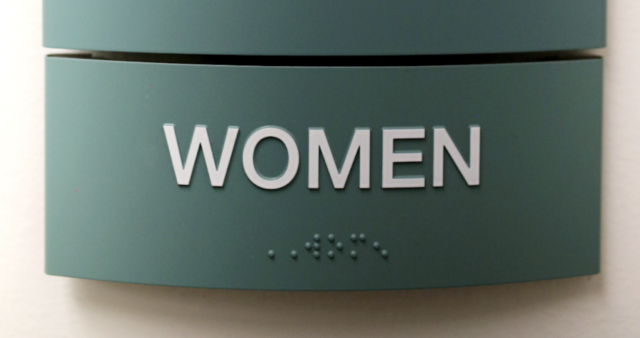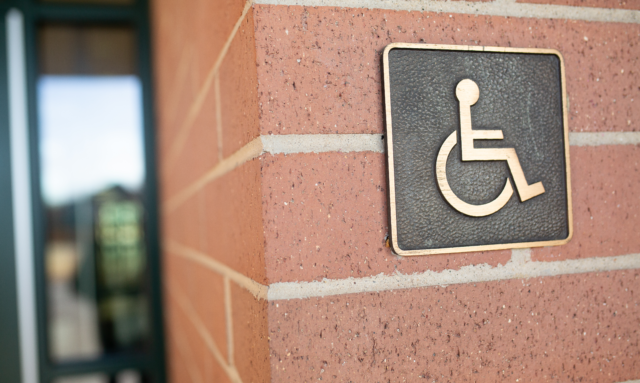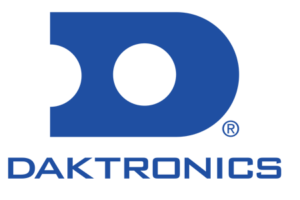ADA-Compliant Signage: What Business Owners Need to Know
Your Signage Partner Should Have Your Ready for Your Grand Opening
Your contractor mentioned something about ADA compliance today.
It left you reeling with questions about what ADA is and how to make sure your business follows the rules.
If your building and your signage don’t pass the ADA inspection, your grand opening could be delayed, and your revenue will take an unnecessary hit.
Choose a signage company that will guarantee products and placement that meet those guidelines.
Don’t take the risk.
Work with a signage partner who does signage right the first time.
Understanding ADA Signage Guidelines
What does ADA mean?
The Americans with Disabilities Act (ADA) was established to eliminate discrimination against individuals with disabilities.
They are national standards for more than just signage, required in addition to any applicable state or local codes or regulations.
ADA compliance is more than just a legal requirement—it’s a commitment to inclusivity and accessibility.
What does it mean for your signage to be ADA-compliant?
Signage is a key component of what it means for your business to be ADA-compliant.
This doesn’t mean every single sign your business has—just specific interior and exterior guidance and labeling signs.
For signs to be considered ADA compliant, they have to follow the ADA Compliance checklist and be approved by an inspector.
By adhering to these guidelines, you’re not only creating a welcoming environment for all individuals but also positioning your business as one that values diversity and inclusiveness.
The checklist is long and very specific—it’s not one you want your inspector to have to go through twice. You need the signs done right the first time.
What businesses are required to use ADA-compliant signage?
Any business that serves the public in any way, regardless of size or age of the building, must follow the ADA guidelines—this includes hotels, restaurants, bars, grocery stores, offices, home businesses, and more.
ADA-compliant signs are necessary for two purposes: first, to label a specific room, area, or element, and second, to offer guidance or details about a permanent room, area, or element.
ADA signage identifies and guides people to common spots like bathrooms, elevators, exits, and any dedicated rooms require ADA signage.
Spaces that undergo frequent changes, like conference rooms or classrooms, typically don’t need ADA signage.
What happens if a business doesn’t comply with the ADA guidelines?
Failure to implement ADA-compliant signage can lead to significant delays in the final inspections and approvals required for your business to open its doors. Inspectors won’t sign off until all aspects, including signage, are in order.
Overlooking ADA signage regulations can also result in fines and potential litigation. Understanding and adhering to guidelines is your legal shield.
Beyond legalities, ADA-compliant signage showcases your commitment to inclusivity. It’s a positive reflection on your business, attracting a broader customer base.
Partner With Signage Professionals for ADA Signage
As a business owner, it’s not your job to guarantee ADA compliance—it’s your signage partner’s.
You need to work with signage professionals who not only understand the rules but can also fabricate and install ADA-compliant signage.
We know that choosing the right signage partner can make the difference between a seamless opening process and a series of frustrating delays.
- Expertise in ADA Guidelines: Choose a signage provider with a proven track record of expertise in ADA guidelines. They should be well-versed in the nuances of the regulations to ensure that every sign in your facility meets the required standards.
- Fabrication Capabilities: Your chosen partner should have the capability to fabricate signs with precision and attention to detail. High-quality materials and craftsmanship are paramount to the longevity and effectiveness of your ADA-compliant signage.
- Installation Efficiency: Time is of the essence when it comes to opening your business. A reliable signage partner should have a streamlined installation process, minimizing disruptions to your timeline and ensuring that your facility is ready for business as scheduled.
- Customization Options: While adhering to ADA guidelines is non-negotiable, your signage should also reflect your brand identity. Look for a partner who offers customization options, allowing you to incorporate your logo, color scheme, and overall aesthetic while maintaining compliance.
ADA Signage Guidelines to Note
Below, we’ve included some of the bigger ADA Signage Guidelines to give you an insight into what your signage partner will be doing in your business.
Remember, these are not details you need to worry about—they are rules your signage partner should know and follow without prompting.
Placement & Location
ADA signage guidelines dictate precise locations for signs to ensure visibility and accessibility for all individuals.
For instance, signs identifying permanent rooms and spaces must be mounted on the latch side of the door and positioned so that the centerline of the sign is 60 inches above the finished floor.
Tactile characters’ baseline should sit at a maximum of 48 inches above the floor, and the top of the sign should not exceed 96 inches from the floor.
Characteristics of Characters
The characters on ADA signs must be uppercase and in sans-serif type.
The height of characters must be between 5/8 inch and 2 inches, ensuring readability for individuals with visual impairments. Opt for readable sans-serif fonts like Arial or Helvetica.
Contrast & Visibility
To ensure legibility, ADA-compliant signs must have a high level of contrast between characters and their background. Dark characters on a light background or vice versa are recommended. The characters should also be in a sans-serif font, and the finish should be non-glare to enhance visibility.

Braille
Braille is a crucial component of ADA signage. The guidelines specify the use of Grade 2 Braille, which involves contractions and short-form words. The Braille should be placed below the corresponding text and positioned 3/8 inch directly below the tactile characters.

Pictograms
Pictograms are used to convey information quickly and universally. These symbols must adhere to specific proportions and design elements outlined in the ADA guidelines. The International Symbol for Accessibility (ISA) will be used.

We’ll Get it Done Within the ADA Guidelines
ADA compliance is simple for a good signage partner.
Understand the guidelines, grasp the repercussions of non-compliance, and work with us for a seamless, no-nonsense solution.
Invest in your business’s success by choosing HES.
From expert knowledge to timely installation, we’re here to ensure your facility is not only legally compliant but also inviting and accessible to everyone.
Contact HES Sign today for a consultation and a guarantee of ADA compliance.




